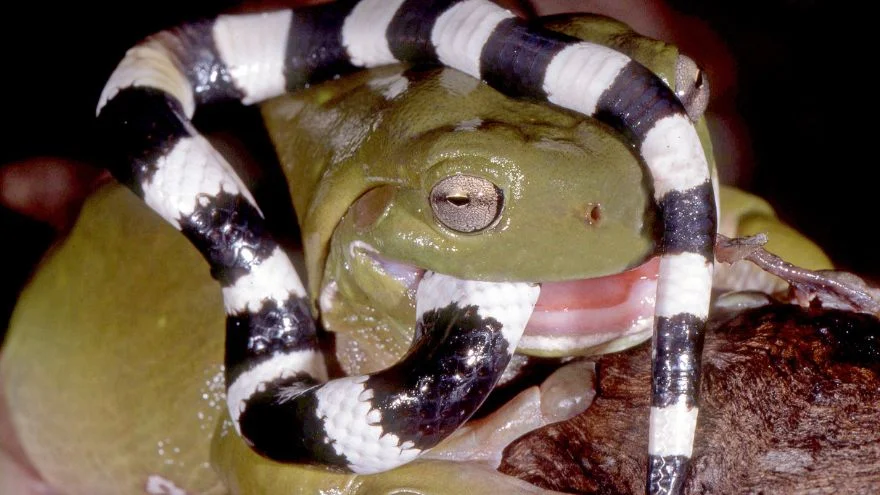Amphibians: Facts, Characteristics, Types & Pictures
Amphibians are tetrapods vertebrates with ectothermic bodies that belong to the biological group Lissamphibia.
These animals are ectothermic as their internal physiological organs are of negligible importance in heat generation, and thus they derive heat from their surroundings.
As the name Amphibian is generated from the Greek word “ἀμφίβιος (amphíbios),” which translates to “both kinds of life,” which denotes amphibians boast of two lives in a manner of sort.
This typically refers to their exclusive residence in waters during the larval stage of their life before going in to live on land when they become adults.
In this article, we dissect every important detail of the amphibian class and reveal complex but marveling details of the animal class.
Interesting Facts About Amphibians
- The first known existence of the animal class dates as far back as the Donovan period, about 350 million years ago.
- Frogs account for 90% of the over 8000 species of animals in the animal class.
- The largest Amphibian in the world is the Chinese giant salamander (Andrias davidianus) which grows as long as 2 meters and is as long as a standard door. The species is critically endangered.
- Some amphibians can breathe not o my through their lungs but also through their skin.
- During winter or changes in temperatures, certain amphibians majorly hibernate, freezing their bodies, with their heartbeat stopped. They stop breathing for a while and, in effect, appear dead.
- When infected with skin viruses, certain amphibians would spend more time sunbathing and increasing body temperature to feel feverish and fight off the viruses in the same manner humans use the jacuzzi.
Characteristics of Amphibians
As with every class of animals in the animal kingdom, amphibians boast of characteristics exclusive to them, some of which are used in deciphering the breed and genus of members of the animal class.
Reproduction
Over the years, various amphibian species have shown various evolutionary characteristics, but one particular characteristic common to all members of the animal class is the evolution of direct development.
While subtle differences exist in the reproduction of various classes of amphibians, the free swimming, and aquatic egg stage have been eliminated in all species of the animal class.
This can be credited to an adaptive survival trait as they lack membranes for carrying eggs or impervious membranes for protecting laid eggs like most amniotes.
Some have thus adapted to reproduction in water bodies. In contrast, others such as the Plethodontidae (salamanders), some species of anurans, and caecilians have direct development of egg capsules in female bodies.
Still, some exhibit viviparity (give birth to young ones alive). After hatching the eggs in their mothers’ bodies, it is common for these hatched eggs to be deposited in ponds or streams, as exhibited by Centrolenids and phyllomedusine hylids.
Still, other species, such as Leptodactylidae and Rhacophoridae create foam egg nests in waters as they lay eggs.
As far as various adaptability reproductive features of species of this animal class go, it gets more exciting.
The mode of reproduction exhibited by the female hylid marsupial frogs that transport eggs in a pouch on their backs and Dendrobatids who lay eggs on land and transport them back to the water.
While most of these reproductive features may seem different in amphibians, the most common among species of the animal class is the release of clear eggs with jelly-like fluid, which are fertilized externally and develop into tadpoles.
This, thus, remains the unique characteristic that sets the animal class apart in terms of reproduction in the animal kingdom.
Metamorphosis
Metamorphosis in amphibians typically begins from the embryonic stage and continues till juvenile or full development.
This is one of the animal class’s key characteristics, evidenced by behavioral modifications and physiological changes.
As most species of the animal class exhibit various reproductive patterns, metamorphosis differs based on species, but differences are often mild and limited to organ development.
Typically metamorphosis’s primary purpose in this animal class is for the development to suit changes in aquatic habitats to terrestrial.
Metamorphosis is often accompanied by changes in internal organs as Gill slits close up to form lungs while the gills are resorbed. Other organs, such as tongues and eyelids, are formed.
These changes often are uniform in all species, but mild differences exist which are exclusive to certain species.
Metamorphosis further extends to skeletons which is even more marveling, especially in tadpoles where limbs break out from the opercular wall, and skin becomes thicker.
Tails fuse to form part of the body. As other organs, such as gills, and mouthparts, develop, equivalent structures in embryonic bodies disappear.
As all organs and systems of animals of the animals class metamorphosize to develop into adults, one change common to all is the change in the urogenital system.
The embryonic pronephric kidney is replaced by the opisthonephric or mesonephric kidney.
This change is significant as its newly developed kidney is well specialized for eliminating concentrated urea instead of diluting ammonia during its embryonic stage.
As stated earlier, metamorphosis differs based on species, and while it is exhibited by the majority of all species of the animal group, few species do not exhibit it.
During metamorphosis, animals do not feed, and as such, the speed of metamorphosis is in relation to body size. Thus, the smaller the species, the faster metamorphosis.
Cold-blooded Vertebrates
A key characteristic of all animal class species is that they are cold-blooded or ectothermic creatures.
This means they lack internal physiological processes to regulate body temperature. Thus, they use the sun alongside shades to balance their body temperatures.
As they get hot quickly by basking in the sun, they live close to water bodies so as to cool down quickly.
The combination of the sun and the need for water bodies to cool temperatures make ponds, lakes, and other water bodies in tropical regions typical habitats for these creatures.
Carnivores
During the embryonic stage of their lives, these animals feed mostly on animal matter and plants through filter feeding mechanisms.
But with the onset of metamorphosis, their digestive system changes alongside their preference in food.
They develop from feeding on plants and animal matter to becoming carnivores.
As fully grown adults, all members of the animal class feed on other animals, particularly insects, earthworks, arachnids, and reptiles, including snakes.
Thrive on land and water
By any measure, this characteristic is the most prominent feature by which the entire species belonging to the animal class is identified.
Life for most species in the animal class begins in the waters, Abd with metamorphosis they become morphologically equipped to thrive in both terrestrial and aquatic habitats.
While they thrive in both aquatic and terrestrial habitats, they do not live far from water bodies or aquatic habitats as their bodies require water bodies to maintain temperature.
Types & Classification of Amphibians
The species of animals classified as Amphibian includes four-limbed vertebrates that are not amniotes.
These vast arrays of creatures that fit under these animal classes were thus subdivided into three other subclasses, namely;
- Lepospondyl (extinct)
- Temnospondyli (extinct)
- Lissamphibia
However, of the three subclasses, only the Lissamphibia, which includes all species of amphibians known to man in this age, is extant.
With the extinction of two subclasses, amphibians found today are all members of the Lissamphibia subclass.
The Lissamphibia subclass is further broken down into four orders or groups of animals, each containing diverse species of animals. The orders in the Lissamphibia subclass include;
- Salientia
- Caudata
- Gymnophiona
- Allocaudata
Of the four orders, the Allocaudata is extinct, with the extant three orders accounting for all of the creatures under the animal class in existence.
Salientia
The group Salientia is a major order in the Amphibian class as most animals in the animal class are classified under Salientia.
The Salientia group boasts numerous extinct orders of species, with only the Anura order ranking as the group’s sole order. This thus makes Salientia synonymous to Anura.
The group majorly consists of frogs, and its origins date as far back as the Permian geologic period, about 265 million years ago.
The only surviving order in the Salientia class, the Anura, consists entirely of frogs and toads, which thus set the hallmark characteristics of the Salientia group.
These creatures in the Anura order are closely related but differentiated into frogs and toads based on skin texture despite possessing similar physiological and morphological characteristics.
Individuals in the group with smooth skin are referred to as frogs, while warty skin individuals are known as toads.
Anura species are characterized by folded long hind limbs, webbed toes, grandiose moist skin, shirt forelimbs, absence of claws and tails, and presence of large eyes.
Anura is further broken down into other subdivisions of families, each with mild differences in behavior and appearance, but all possess the core features of the Anura order. They grow between 0.30 inches to 30 inches.
Anura is the most significant order in the animal class as it boasts of the suborder (Neobatrachia) that accounts for 96% of extant frog species, while the order in its entirety accounts for 88% of all creatures in the animal class.
In all, Salientia accounts for 7500 amphibian species.
Caudata
The name Caudata is coined from the Latin word cauda, which translates to tail, the Caudata species possess tails.
This feature is the core in identifying members of the subgroup and sets it apart from most parts of the animal class.
While they possess tails, another core feature of all species of the Caudata group is the close resemblance to lizards in form.
Typically all species in the group are salamanders and have an elongated form.
They also possess side-flattened finned tails. They, however, lack claws and possess skins with no scales but may be covered with tubercles.
They can grow between 0.8 inches to as long as 5 feet 11 inches but have an average length of 6 inches.
They typically live under stones and logs on land and venture out at night to search for works to feed in.
The Caudata group consists of about 774 species and 9 groups, which account for 9% of the entire species in the animal class.
Gymnophiona
The Gymnophiona order comprises majorly of caecilian species. Derived from the Greek term “gymnos,” meaning naked, and “ophis,” which refers to serpent, most of the species in the Gymnophiona order resemble snakes.
Species in the order are characterized by their long, limbless, and cylindrical bodies, which resemble worms.
They grow between 3 – 30 inches, with the exception of the Caecilia thompsoni species which grow as long as 4.9 feet.
Their body contains transverse folds in which lies dermal scales.
Close to their eyes are short tentacles that have olfactory and tactile functions. They are mostly aquatic but live under plant debris, and damp soil.
There are 215 species of animals and 10 families in the Gymnophiona order, which accounts for 3% of creatures in the animal class.
Frequently Asked Questions
What are the three main types of amphibians?
The three main types of amphibians are Urodela (Gymnophiona order, the salamanders family), Anura (frogs group), and Apoda (caecilians).
What is the oldest Amphibian?
The earliest known Amphibian is the Elginerpeton. Fossils of the Elginerpeton were found in Scotland in the Late Devonian rocks, which date as far back as 368 million years ago.
How are amphibians born?
Most amphibians hatch from eggs laid with no hard shell or soft skin. They begin life in aquatic habitats, begin life from larvae or tadpoles, and undergo metamorphosis to develop into adults.
What is the life cycle of an amphibian?
Amphibians undergo form stages in their life cycle. They develop from embryonic eggs to tadpoles, Geo fire developing into young frogs, and grown adults.
Do amphibians have a backbone?
A major hallmark of amphibians is that they are vertebrates and thus possess backbones.
Wrap Up
The amphibians class contains as many as 8000 species of animals, each with diverse features that set them apart.
The animal class has seen various creatures in the millions of years it has survived, with several species gaining into extinction and many evolving.
As the creatures continue to thrive in their various settings, various challenges, particularly climate change, pose a significant threat to their survival as numerous species of the class are on the brink of extinction.
To ensure the continuity of the species of the animal class, we should take advantage of all avenues to support all conservation efforts.
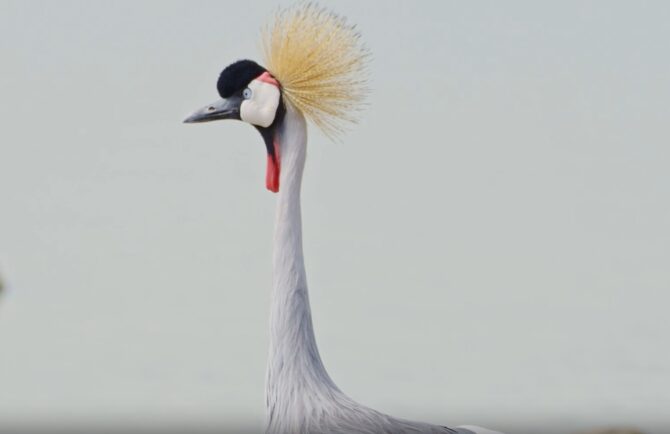
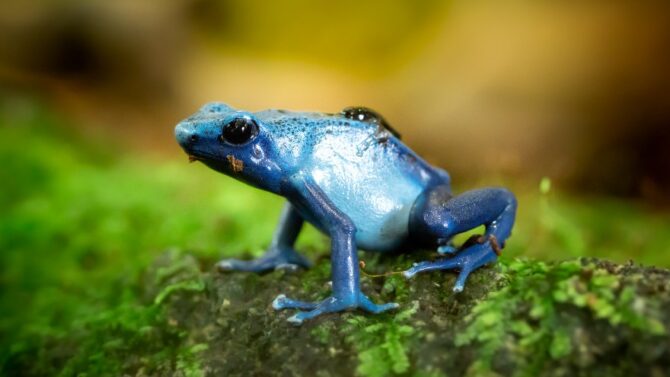
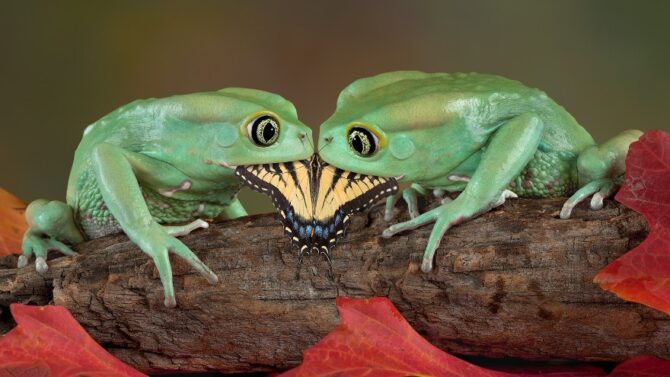
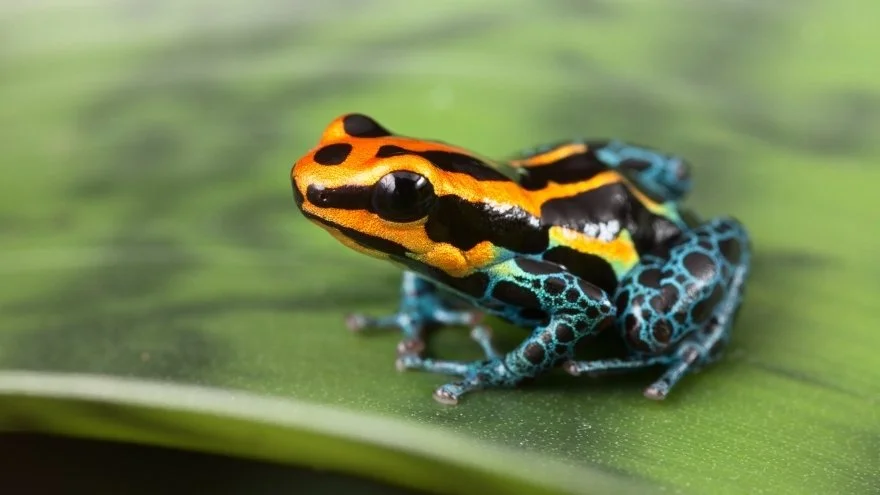
![How Long Can Frogs Go Without Food Or Water [Answered]](https://animalvivid.com/wp-content/uploads/2022/08/How-Long-Can-Frogs-Go-Without-Food-Or-Water-Answered.jpg.webp)
